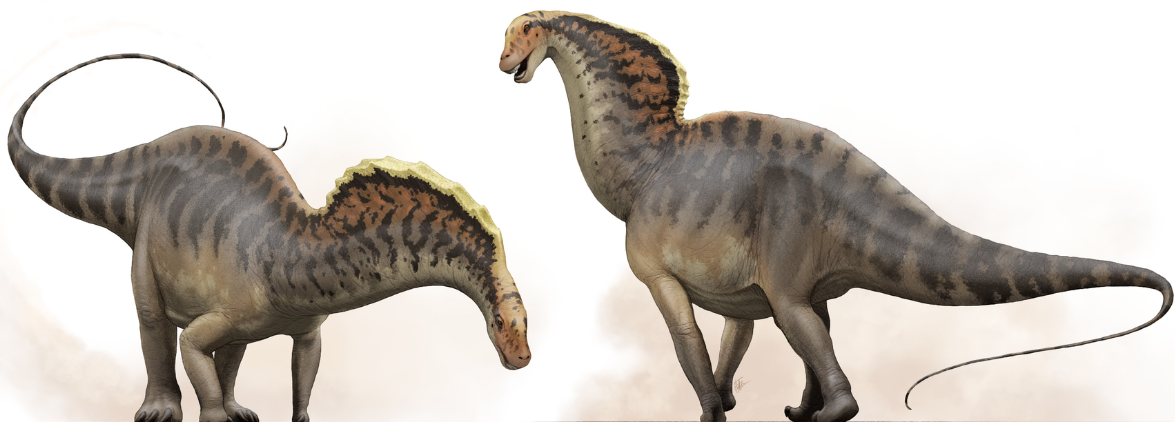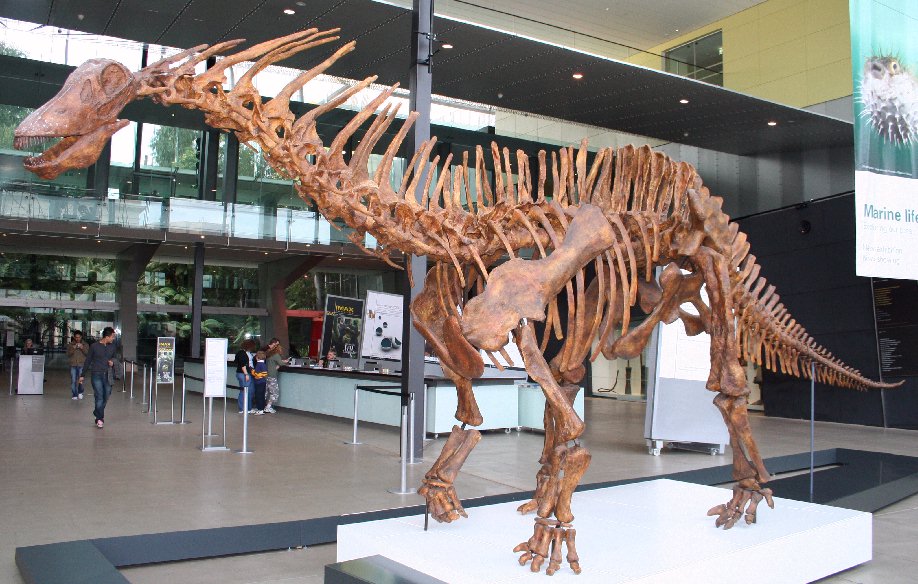Amargasaurus
A-mar-gah-sore-usName meaning:La Amarga Arroyo Lizard
Time Period: Late Campanian to early Maastrichtian (Late Cretaceous) 129.4–122.46 mya
Locations: Argentina-La Amarga formation
Taxonomy: Sauropoda-Diplodocoidea-Dicraeosauridae
Subspecies: A. cazaui
Characteristics ~ ~ ~ ~
Amargasaurus was a dicraeosaur, a group of sauropods evolved from Diplodocids to share the environment with them without creating competition. Being smaller than the Diplodicids and having a relatively short neck, dicraeosaurs like Amargasaurus would avoid competition for food with their larger cousins. Amargasaurus had a unique neck with long spike-like bones extending from them. The Spines are debated between either supporting a sail like structure, or just being bare boney spines. A sail would likely be used as a display structure helping Amargasaurs identify individuals and attract mates. However I think that they were more likely spines because a similar species Bajadasaurus also has them but longer and facing the opposite direction. Spines would help Amargasaurus protect its neck from Predators as it ate from the ground foliage. They also had a very long tail that can be used as a whip for additional defense against predators. Although Amargasaurus's only known predator is the very small Ligabueino with presumably another larger theropod species still undiscovered. It lived with other larger sauropods like Zapalasaurus and Amargatitanis, the crocodile Amargasuchus, and one of the last surviving stegosaurs, Amargastego.


History & Fossils ~ ~ ~ ~
Discovered in 1991 and described by Leonardo Salgado and Jose Bonaparte, only one skeleton has been unearthed, but its remarkably complete. The remains include the neck, part of the skull, two legs, and part of the tail, offering invaluable insights into its anatomy. Amargasaurus was recovered in the same expedition that was part of the movement "Jurassic and Cretaceous Terrestrial Vertebrates of South America" in 1984 by Jose Bonaparte its purpose was to discover the animals of a Lost world within the Lost world. Holotype Carnotaurus MACN-CH 894 was also recovered in the movement and it is still used in research today.


Media Deptictions ~ ~ ~ ~
Jurassic World Evolution 2 One of 4 New dinosaurs in the base game. Amargasaurus is a dinosaur you can begin your challenge runs with so it has a lot of utility in te start only needing a little water ground fiber and forest and one friend. But this animal has one of the lowest appeal ratings in the game relative to size and cost so it loses utility quickly. It's still cute looking and makes me want to protect it, because unfortunately it and all other sauropods cannot defend themselves from carnivores in this game.

